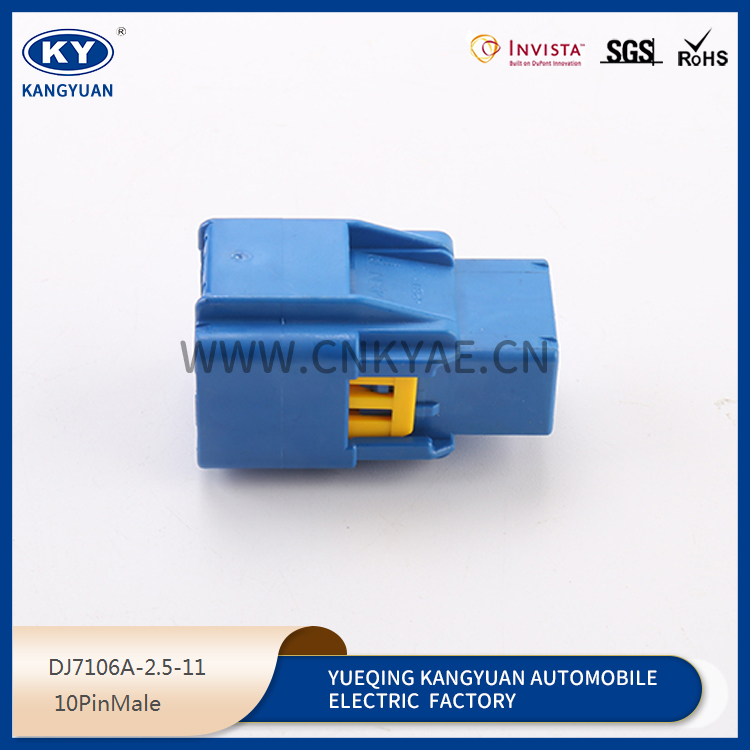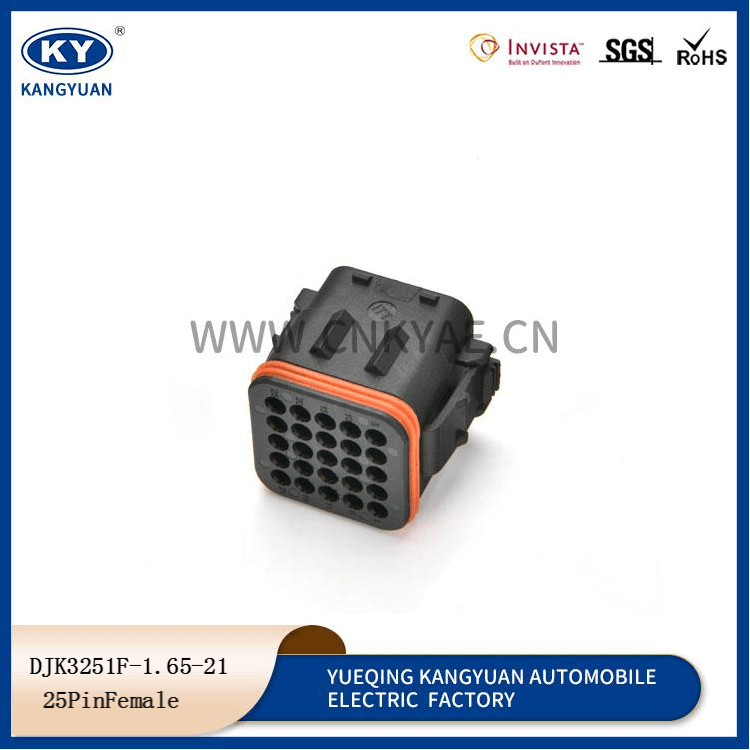Our car experts choose every product we feature. We may earn money from the links on this page.
We've rounded up a collection of adapters, extension cables, and accessories to ensure you can charge your EV with ease. Wiring Connectors Automotive

This story was updated in September 2023 with new products and information.
Navigating the world of electric vehicles (EVs) demands more than typical auto maintenance: It calls for the right gear and accessories, particularly when it comes to charging. The options are vast, from indispensable adapters and extension cables to electricity usage monitors that help track charging details. With these tools, EV owners can be better equipped to handle the unique challenges and opportunities that EVs offer.
But with such a wealth of options, it's easy to feel overwhelmed. Where do you start, and what do you really need? We've curated a list of top EV charging accessories on the market, based both on personal experience from our editors as well as consumers' thoughts in the form of reviews and buying trends.
This compact adapter is a simple solution to charging your J1772 EV at Tesla's growing range of destination chargers (over 40,000 of them, according to Tesla), as well as with Tesla's Wall Connector—a perennial pick of ours as one of the best at-home EV chargers. The Lectron NACS to J1772 adapter maxes out at 48 amps and 250V for compatible vehicles and is small enough to keep in the glove compartment.
While already a convenient adapter to have on hand for non-Tesla vehicles, it will soon become even more useful. The North American Charging Standard (NACS) Tesla uses for its chargers is going to become even more ubiquitous with Ford, GM, Mercedes-Benz, Nissan, Volvo, Polestar, and Rivian all announcing their future EVs will drop their existing platforms for a more unified charging ecosystem.
This Lectron J1772 extension cable extends the reach of any J1772 connector so you can connect to your vehicle's charging port from farther away. This unit works with both Level 1 and Level 2 chargers and supports up to 40 amps.
The unit features built-in overheating protection and is IP66 rated for use in nearly any weather thrown its way. If 20 feet isn't long enough, Lectron also offers a 40-foot version at a higher price.
After spending hundreds (if not thousands) of dollars on setting up EV charging equipment, the last thing you want to do is subject it to any unnecessary wear and tear. One way to reduce wear is to ensure the cable doesn't take unnecessary abuse from the garage door when charging your vehicle outside.
The Spigen DuraPro Garage Door Pass Protector combats this by creating a little bridge of sorts for the charging cable to safely pass through without additional pressure on it. Assuming your garage door has a seal at the bottom, the Spigen DuraPro can securely fit underneath your garage door without leaving space to allow critters in (at least those with four legs).
This has been specifically designed for Tesla's Mobile Connector and Gen 3 Tesla Wall Connector, but any cable within the half-inch range should work, since the protector is made of a soft plastic that can flex. In our time testing this protector, we found it easy enough to use, but even as thin as it is, it does still leave a small gap at the bottom of our garage door and the opening the cable goes through is large enough to let even large insects inside, as visible in the image below.
If you don't mind risking small critters getting into your garage, though, and want to prioritize protecting your cable, this is still an affordable option that's otherwise easy to use and well-built.
As the name suggests, this Lectron adapter enables Tesla EVs (and eventually other EVs that adopt the NACS plug) to charge on Combined Charging System (CCS) DC fast-charging connections at up to 150 kW. It features a built-in temperature monitoring system capable of reducing the throughput should the unit get too hot.
The Emporia Smart Home Energy Monitor is a more capable energy monitoring and tracking solution for anyone wanting to track consumption directly at the source—your breaker box. It installs fairly easily into most circuit panels with its clamp-on current sensors. What sets it apart is its continuous energy monitoring capabilities. It works alongside Emporia's Android and iOS apps to make energy consumption tracking—for your EV charging as well as the rest of your house—easy, whether you're at home or away.
It includes eight 50-amp sensors and features a 2.4-GHz Wi-Fi connection with data refreshes every second within 2 percent accuracy. One-second data is stored for three hours, one-minute data is stored for seven days, and one-hour data is kept indefinitely for long-term usage statistics. All data can be exported from Emporia's mobile or web apps for personal tracking.
On the flip side is this J1772 (female) to NACS (male) adapter, which allows Tesla owners to charge on non-Tesla charging stations. As with the aforementioned Lectron adapter, this unit is currently only useful for Tesla owners, but once Ford, GM, and others start adding NACS connectors to their EVs, an adapter such as this one will be required if you come across non-NACS Level 1 and Level 2 chargers down the metaphorical and literal road.
This particular adapter is a bestseller on Amazon. It's IP54 rated and SGS certified to comply with UL 2251 and CSA C.22.2 No. 281–17 standards (USA and Canada safety standards for electrical connections).
Another cable protection option is the Cable Shield. It's a best-seller on Amazon and fairly straightforward: You wrap the sleeve completely around the part of your charging cable that sits underneath the garage door.
In principle, it's simple to use and it even comes in two sizes (large and extra large) to fit whatever diameter cable you may have. While it did manage to protect our charging cable in testing, it proved challenging to get the cable inside the wrap to the point where pliers were required to coax it into place.
This model also caused an even more dramatic gap at the bottom of the garage compared to the Spigen cable protector, which could lead to more than just insects (read: mice, snakes, and other small creatures) getting inside your garage.
However, if you want to prioritize your charging cable above all else, this does offer fantastic protection and is solid enough that it should be able to withstand years of use. It's also made here in the United States.
This Lectron 20-foot NACS extension cable is functionally identical to the above cable but works on Tesla's NACS plugs. It's rated for 48 amps or 11.5 kW charging capacity and is safe for outdoor use. Lectron notes this charger works with Tesla High Powered Wall Connectors, all generations of Tesla Destination Chargers, and Tesla Mobile Connectors. It will not work with Tesla Superchargers, and it does not control the door on the Tesla charge port as Tesla's connectors do.
While currently limited to Tesla vehicles, this extension cable will soon work with other EVs as manufacturers make the jump to the NACS connection over the coming years.
If you want to monitor your energy usage when charging via a 120V connection, the Kill-A-Watt is a simple solution for doing so. Roughly the size of two mid-size smartphones stacked atop one another, this unit can track electricity usage by day, week, month, or even year, extrapolating information from shorter time periods.
It features an LCD display that can cycle through volts, amps, and wattage within 2 percent accuracy.
There are various EV charging connectors out there, but the most common are:
This will vary depending on the EV you own. Generally speaking (for North America), Teslas use the NACS connection while non-Tesla vehicles typically use a J1772 connection.
That said, always refer to your vehicle's owner's manual or manufacturer website. They will specify the type of connector your EV uses. Additionally, most modern EVs have labels or markings near the charging port indicating the type of connector they accept.
Charging times will vary greatly based on the specific charger's power output, any adapters between the charger and the vehicle, and the EV's battery bandwidth/capacity. Generally speaking, you can expect the following timeframes for most standard-size electric vehicles:
Yes, EV charging systems are designed with safety features that protect against electrical hazards, even in wet conditions. However, always ensure charging equipment is in good condition, properly connected, and free of visible damage before use.
Always consult your EV manufacturer or a qualified electrician for any specific concerns related to charging.
Gannon Burgett loves cameras, cars, and coffee: a perfect combination for his Hearst Autos work. His byline has appeared in USA Today, Gizmodo, TechCrunch, Digital Trends, the Detroit Free Press, and more.
Essential Gear for Overlanding Adventures
Best Car Phone Mounts, Tested
What Are the Best Vehicle Dash Cams?
Best Tools to Fix Dents, Dings and Bangs
The Best Tailgating Essentials of 2023
The Best Truck Tires, According to Experts
45 Cool Car Accessories – Car and Driver
Tested: The Best Booster Car Seats
Labor Day Tools Sales 2023: Lowe’s, Home Depot
Top-Rated Seat Covers for Your New Ford Bronco
The Best Motorcycle Jackets You Can Buy
A Part of Hearst Digital Media
We may earn a commission for purchases made through our links.

Wiring Connectors Automotive ©2023 Hearst Autos, Inc. All Rights Reserved.